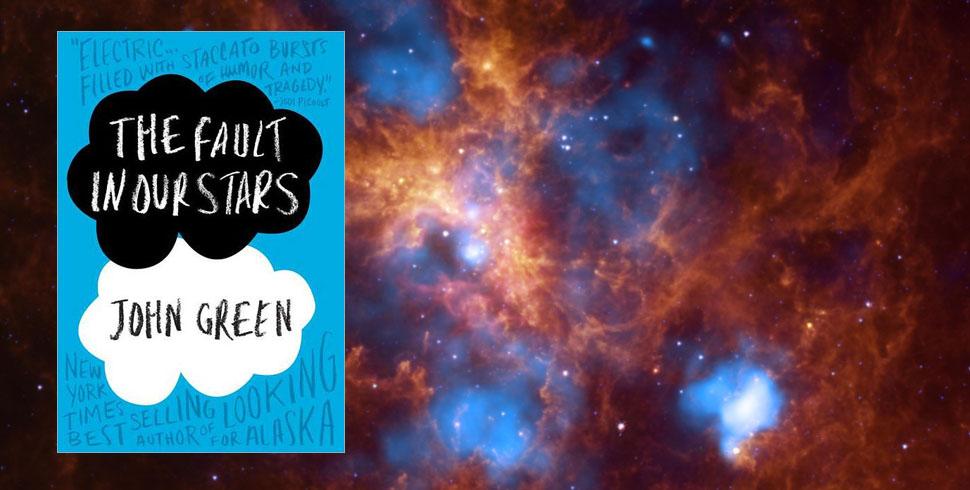Review: New book helps teens confront cancer, mortality
Background image: courtesy of U.S. government work/photo by NASA/CXC/PSU/L Book cover courtesy of Penguin Group. Photo illustration by Jessica King Fredel
“The fault, dear Brutus, is not in our stars/But in ourselves, that we are underlings.”
This quote from Shakespeare’s “Julius Caesar,” was the inspiration for the title of John Green’s latest novel, “The Fault in Our Stars.” When I first heard about “Fault,” I did not want to read a book about cancer. That sounds pretty heartless, but it seemed like such an easy, obvious way for one of my favorite authors to confront the issue of mortality with which so many teenagers struggle. There are so many books — like another book I just finished, ”This Side of Paradise” by F. Scott Fitzgerald — that confront deeper human struggles and questions without being quite so direct about it.
John Green is one of my favorite authors. His first novel, “Looking for Alaska,” was my favorite book for at least two years. I loved how “Alaska” confronted death and the search for life’s purpose without shoving it down one’ throat in the first couple of pages. A book about cancer, I was worried, would not be so subtly nuanced.
Yes, “Fault” is about cancer. And yes, it seems completely clichéd. The plot centers on Hazel and Augustus, two romantically involved cancer patients who meet at a support group. I saw “Restless” last year (a film about a teenager with a terminal disease) and, as good as Gus Van Sant is as a director, I just could not enjoy that film. However, as Hazel says of her favorite book, (a book within a book, how exciting!) “But it’s not a cancer book, because cancer books suck. Like, in cancer books, the cancer person starts a charity that raises money to fight cancer, right? And this commitment to charity reminds the cancer person of the essential goodness of humanity and makes him/her feel loved and encouraged because s/he will leave a cancer-curing legacy.” Thankfully, “The Fault in our Stars” does not adhere to this formula.
While the book centers on Hazel’s thyroid cancer and Augustus’ loss of his leg to osteosarcoma (a cancerous bone tumor), it uses their respective illnesses as a jumping-off point to further the characters’ journey. These are sharp, sassy, intelligent teenagers who have been forced to mature due to obvious reasons. Although I want to refrain from giving away too much of the plot, Augustus and Hazel’s star-crossed love affair includes the aforementioned book (entitled “An Imperial Infliction”) and a trip to Amsterdam.
Please do not make the same mistake that I did in judging a book by its cover. This is not a book about death — it’s a book about life. As hesitant as you may be (I resisted the pull for the first 40 pages), “Fault” really is worth it. This is not to say that you forget about the main characters’ relationships with cancer; it’s just that you learn to understand what it’s like to actually live with cancer. The characters’ illness defines their lives without defining their fundamental humanity.
This is definitely a young adult book; most of the characters are around 16 years old and there is plenty of discussion about video games and “America’s Next Top Model” and making out. Hazel and Augustus are plausible, understandable and real. The beauty of the book’s adolescence, however, is that when Green sneaks in a sentence so beautifully crafted and true that it literally takes your breath away, it’s cohesive and effortless without being cloying.
John, I’m sorry for doubting you.
“The Fault in Our Stars” was released Jan. 10 and is available at amazon.com for $9.45.












